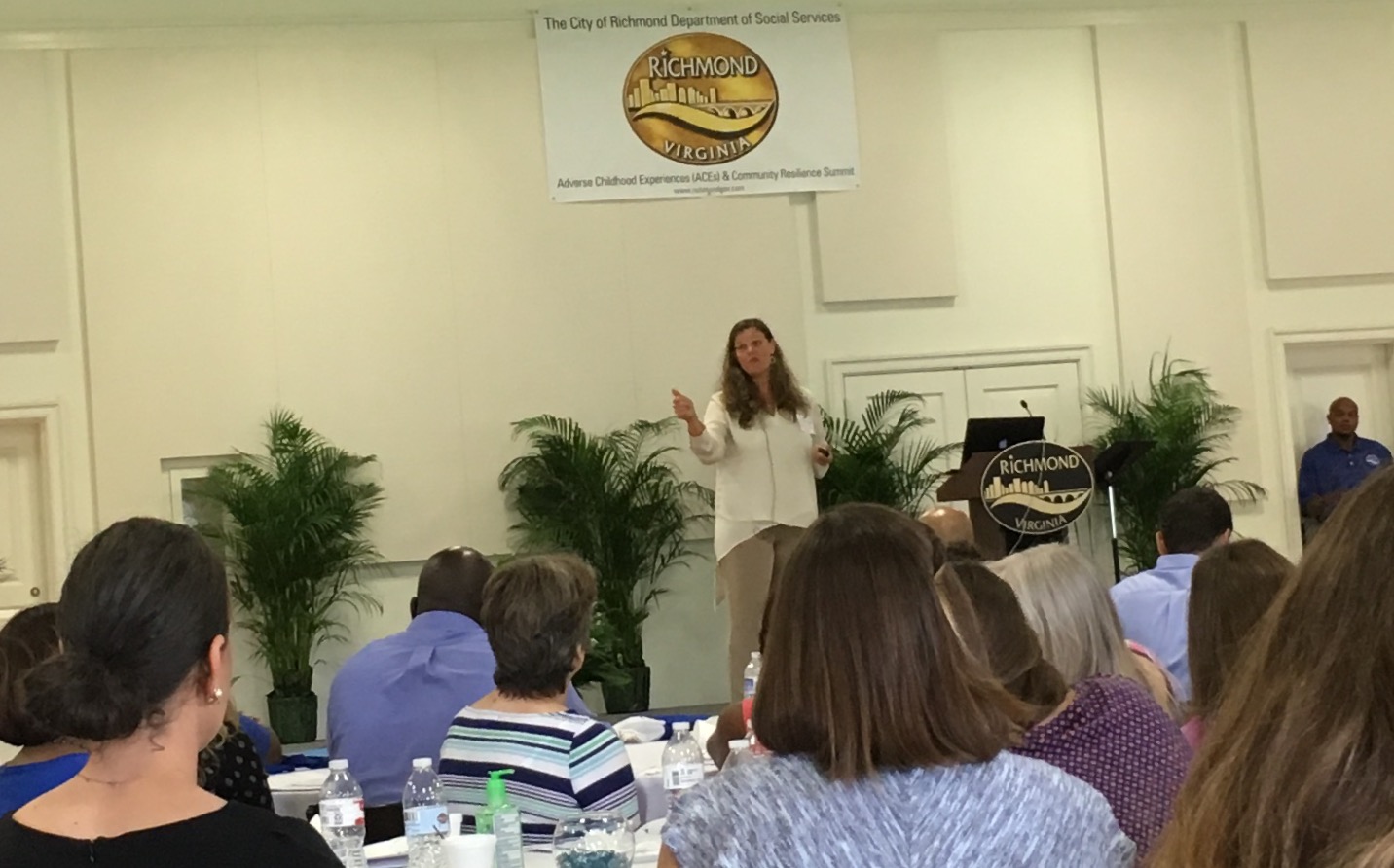

By Ashley Koski
Last week the city of Richmond hosted the first local Adverse Childhood Experiences (ACEs) & Community Resilience Summit. The two-day conference attracted over 200 participants and brought many diverse voices, from youth to policymakers, to one table to discuss trauma-informed care (TIC). Through these discussions, Richmond city officials demonstrated a fervent commitment towards implementing trauma-informed practices into its systems of care and towards working with localities across the state to build a stronger trauma-informed network.
The Voices team had the privilege of being involved in the ACEs Summit as both presenters and participants (check out our presentation on: State Level Trauma-Informed Policies). Through this experience, we learned new lessons about toxic stress and were able to engage in dialogue about how to improve trauma-informed care in Virginia. Some of the key points will be discussed below:
1. Incorporate Youth & Families
Throughout the conference, there was a strong push to incorporate more youth and families/caregivers into the conversation about trauma. After hearing multiple presentations, it became clear that our state’s systems cannot become truly trauma-informed without 1) teaching youth and families about trauma and how to successfully navigate trauma-informed systems and 2) listening to these respective groups in order to understand where their needs and concerns lie.
2. Understand the science of trauma
In addition, presentations from David Wallace, Dr. Robin Foster, and others demonstrated that trauma can be presented differently in different environments at different times; therefore, it is important for all individuals interacting and working with those with trauma (from a front desk employee to a policy leader) have a baseline understanding of the way ACEs impact the brain and the body.
3. Communicate!
Further, messages from the Summit reminded us that it is important for individuals working with trauma to remain transparent about their own ACEs and to share their areas of expertise with their fellow advocates.
Being transparent about personal experiences with trauma and personal triggers allows those working with trauma victims to do so in a more effective manner. Similarly, trauma-informed work is more effective when those working with ACEs make the conscious effort to share information about the knowledge they have learned and the projects they are working. Communication is crucial because it prevents duplicate trauma initiatives from happening and ensures that different sectors are working in unison. To stay up to date with networks formed from the Summit, follow the #ResilientRVA hashtag on social media, look from more presentations posted soon at rvaacesummit.net and stay connected with the upcoming RVA page on: http://www.acesconnection.com.
4. Importance of the story
Lastly, the Summit demonstrated that, beyond tangible tools like handouts and a toolkit, personal stories are extremely impactful tools. Many presenters, like Chauncey Strong and Dr. Allison Jackson, showed that these types of touching stories help to create a clear and relatable understanding of trauma and can be utilized to spread awareness and gain support for improved trauma-informed care in any level of work—from the organizational to the policy level.
Barriers
Beyond these lessons, our team at Voices was also able to obtain a better understanding of some of the barriers and solutions to implementing trauma-informed care in our state. During the Summit’s discussion portion, some common barriers that were identified by participants were: funding issues, a strong focus on local endeavors, legislative barriers, and a lack of resources for youth.
For instance, in VA there is a lack of funding for trauma work due to: a misunderstanding of toxic stress, competing priorities for funding, an unequal distribution of funds for preventive services, fear of inputting resources into innovative practices, and a lack of buy-in from funders. Further, in our state much of the trauma-informed focus is centralized only in the capital (Richmond) and our localities have a very strong level of influence—therefore, it is difficult to implement statewide trauma-informed practices. Other barriers to implementing TIC throughout the state include a frequent turn around of power at the legislative level, a lack of communication between sectors working on TIC, a lack of youth peer support, and poor health resources in schools.
Next Steps
So, with all of these barriers—what next steps can we take as a state to improve trauma-informed practices and policies in Virginia?
Together we will continue to build a more resilient state that will support our youth!
Read More Blog Posts